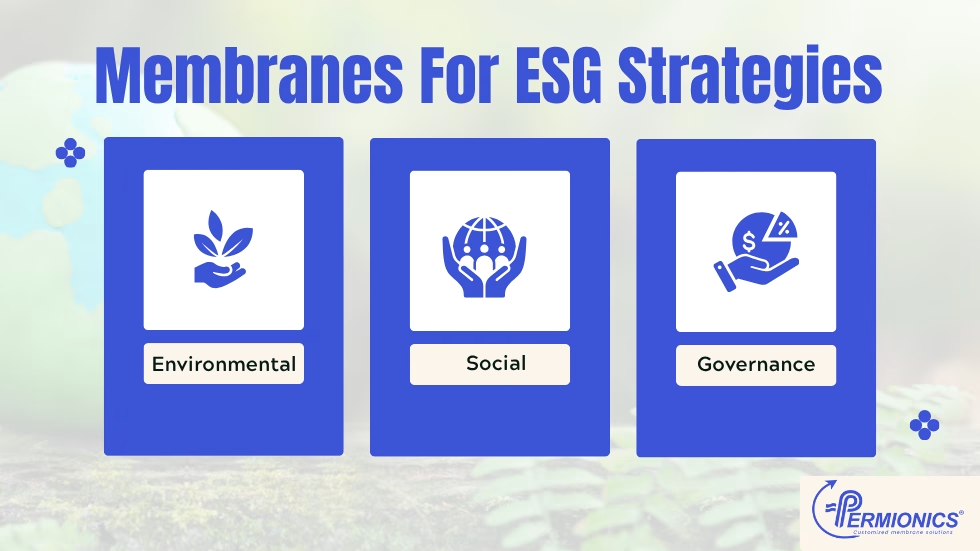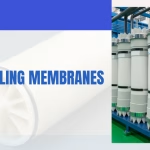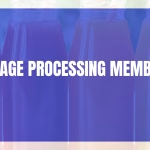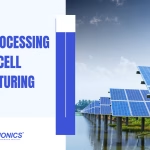Introduction: ESG Is No Longer Optional
In today’s world, Environmental, Social, and Governance (ESG) metrics are not just buzzwords — they’re business imperatives. Investors demand them. Customers expect them. Regulators enforce them. And industries across sectors — from manufacturing to pharmaceuticals — are under growing pressure to meet them.
One of the most effective, yet underappreciated tools in the ESG journey is membrane technology. Whether it’s through water reuse, reducing waste, or cutting energy consumption, sustainable membrane solutions offer industries a direct path to meeting their ESG goals — without sacrificing operational efficiency.
The Environmental “E” in ESG: Where Membranes Excel
Membrane filtration isn’t just about clean water. It’s about clean operations. It’s one of the few technologies that can help a plant improve its water use, energy footprint, and waste output — all at once.
Let’s break it down:
Water Use Reduction
Water scarcity is no longer a distant concern. For many industrial units, it’s a daily operational risk. Membrane filtration for water reuse helps plants recover and reuse up to 90–95% of their process water. This drastically reduces freshwater intake, alleviating pressure on local water sources.
Energy Efficiency
Traditional water treatment methods — like thermal evaporation or chemical-intensive clarification — consume huge amounts of power and resources. In contrast, membranes operate under low-pressure, low-energy conditions. Technologies like RO, UF, and NF require minimal thermal input, making them far more sustainable for long-term use.
Waste Reduction & ZLD
Wastewater discharge is a major red flag for ESG compliance. Membranes enable industries to minimize or eliminate liquid discharge by concentrating waste, making Zero Liquid Discharge (ZLD) not just achievable but efficient. This ensures cleaner effluent, lower pollution, and a stronger environmental scorecard.
The Social “S” in ESG: Building Community Trust
Beyond the numbers, ESG is about people. Communities, workers, and consumers care about how responsibly a company treats its environment. A factory that recycles 90% of its wastewater and reduces groundwater dependency wins public trust. It also avoids the risk of shutdowns due to local protests or water access restrictions.
Membrane systems support responsible resource use, making industries better neighbors. In areas where water is scarce, using sustainable membrane solutions isn’t just smart — it’s ethical.
The Governance “G” in ESG: Risk and Compliance
In industries like pharmaceuticals, food & beverage, and chemicals, water quality directly affects product safety and regulatory approval. Membranes ensure high-quality, consistent output, while automated systems offer better traceability and reporting.
Governance also means planning for the future. Companies that invest in modern, energy-efficient, low-waste technologies like membranes are better prepared for stricter environmental laws, audits, and global trade standards.
The Role of Membranes in Sustainability
When it comes to measurable impact, the role of membranes in sustainability is clear:
- Reduce water intake by up to 90% through reuse
- Lower energy usage compared to thermal treatment systems
- Enable compact, modular plant designs — reducing land and infrastructure needs
- Support decentralized treatment and circular water use models
- Help achieve certifications like LEED, ISO 14001, and more
Unlike many sustainability upgrades that require a full overhaul, membranes can be integrated into existing systems — making them both scalable and practical.
Real-World Example: Turning ESG Intent into Action
Let’s say a textile manufacturer wants to improve its ESG score. It currently discharges partially treated water and relies on borewells for supply. By implementing a membrane-based water reuse system, they could:
- Recycle 80%+ of their wastewater
- Minimize dependency on groundwater
- Achieve ZLD compliance
- Cut down on chemical usage and energy costs
- Report quantifiable environmental savings in their ESG disclosure
These results not only benefit the environment but also reduce operational risk and improve brand reputation.
Environmental Benefits of Membrane Systems: A Closer Look
Let’s take a quick snapshot of the environmental benefits of membrane systems that directly align with ESG goals:
| Benefit | ESG Impact Area |
| Water reuse and recycling | Environment, Social |
| Reduced energy consumption | Environment |
| Zero liquid discharge potential | Environment, Governance |
| Fewer chemicals used | Environment, Social |
| Compact systems (small footprint) | Environment |
| Lower carbon emissions | Environment |
This kind of measurable data strengthens sustainability reporting and shows real commitment — not just lip service.
Why Permionics Membranes Are Built for ESG Excellence
When it comes to sustainable membrane solutions, not all technology is created equal. Permionics, a pioneer in membrane manufacturing and engineering in India, offers several advantages:
- Locally made membranes: Lower carbon footprint and faster supply chain
- Custom-engineered systems: Built for your feedwater, load, and targets
- Energy-efficient designs: Smart pump sizing, energy recovery, and low-pressure operations
- Support for ZLD and high recovery: Especially in challenging wastewater types
- End-to-end sustainability mindset: From design to operation and maintenance
Permionics isn’t just selling membranes — they’re enabling industries to meet their ESG commitments with confidence and credibility.
Membranes: A Gateway to Smarter, Greener Industry
The transition to cleaner, smarter, more transparent operations starts with sensible technology choices. Membranes deliver a rare combination: environmental performance, financial ROI, and operational simplicity. That’s what makes them so aligned with ESG goals.
From water reuse to pollution prevention, from energy savings to regulatory compliance — membranes do more than treat water. They future-proof your plant.
Early Adoption Brings Long-Term ESG Advantage
As ESG becomes a global benchmark, companies that take early action with proven technologies like membranes will stay ahead. These are not experimental tools — they’re reliable, scalable, and already used by top industries worldwide. Membranes allow businesses to meet sustainability goals without disrupting operations, making them one of the smartest upgrades an industrial plant can invest in today.
Conclusion: ESG Begins with Smart Filtration
If you’re serious about ESG, membranes are no longer optional — they’re essential. They help industries go beyond compliance and actually deliver results that matter.
By investing in sustainable membrane solutions, industries take a clear step toward being more responsible, more resilient, and more respected. With partners like Permionics, the path to ESG success is not only achievable — but sustainable in every sense of the word.






